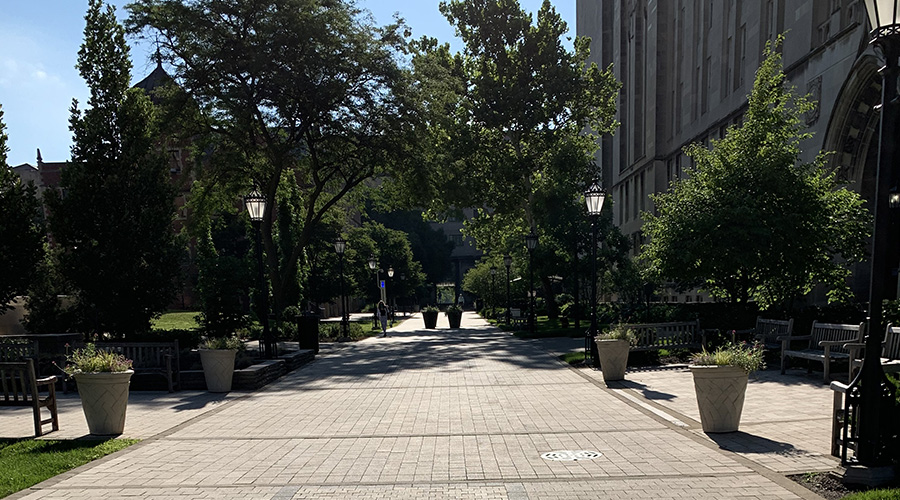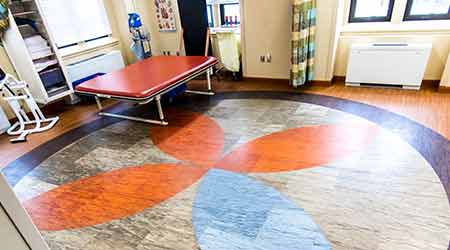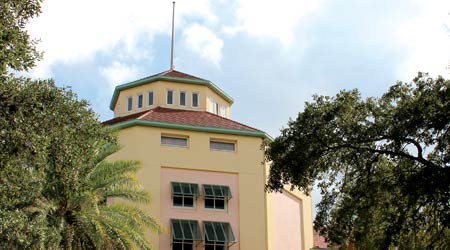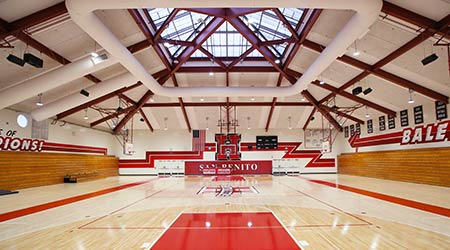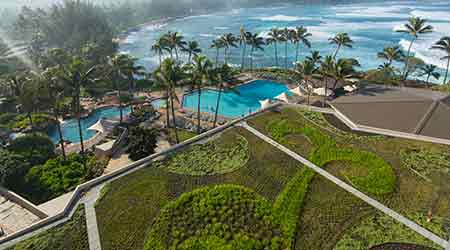view all Case Studies
Analytics System Halves Energy Use at Shedd Aquarium in Chicago
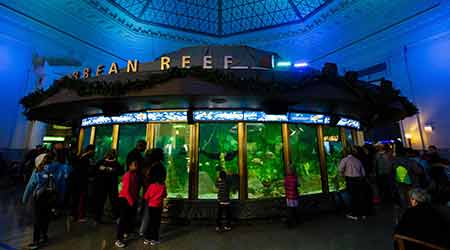
In 2013, the decision-makers at Shedd Aquarium committed to an ambitious goal of cutting the aquarium’s energy consumption in half by 2020. This commitment to sustainability extends from water conserving exhibits and energy-efficient lighting to green gardens and the food its inhabitants eat.
November 16, 2016 -
Building Automation
The Shedd Aquarium first opened its doors to visitors in 1930. Today almost 2 million guests visit this national historic landmark annually. The aquatic environments in the original aquarium contain more than 1.5 million gallons of water, including a 90,000-gallon exhibit created in 1971 to reproduce a Caribbean coral reef. Over the years the aquarium has undergone expansions to accommodate other large exhibits, more than doubling its original size to cover 422,000 square feet. In 1991, Shedd Aquarium expanded to recreate a Pacific Northwest coastal environment. Known today as the Abbott Oceanarium, this 170,000-square-foot exhibit holds 3 million gallons of water and features everything from beluga whales and Pacific white-sided dolphins to sea otters and sea lions. It is also the largest indoor marine mammal facility in the world.
A 2003 expansion houses the 27,000-square-foot Wild Reef, which holds more than 570,000 gallons of water. Built in an underground wing of the aquarium, this exhibit recreates a Philippine coral reef to allow visitors to enjoy the most diverse underwater ecosystem in the world. A facility this size has multiple challenges with regard to energy use in maintaining diverse environments for visitors, staff, and more than 32,500 aquatic animals. In 2013, decision-makers committed to an ambitious goal of cutting the aquarium’s energy consumption in half by 2020. This commitment to sustainability extends into every part of Shedd Aquarium — from water conserving exhibits and energy-efficient lighting to green gardens and the food its inhabitants eat.
Sharing a common vision
Both Shedd Aquarium and Schneider Electric are committed to sustainability. Schneider Electric understands that monitoring-based commissioning (MBCx) is all about fine-tuning systems and equipment to conserve energy. The Building Analytics solution helps achieve that goal by identifying and prioritizing top recommendations for energy conservation, as well as for avoidable energy costs.
The Building Analytics solution also offered the tools needed to implement a fault detection and diagnostics solution that would comply with Commonwealth Edison’s (ComEd’s) MBCx criteria, such as monitoring building system performance for at least 18 months while continually identifying and implementing energy-saving improvements within six months of being identified. After reviewing competitive solutions, Shedd Aquarium decision-makers chose to team with Schneider Electric to achieve their vision for sustainability.
Shedd Aquarium and Schneider Electric had previously collaborated on other sustainability projects, including applying Schneider Electric’s code engineering expertise to the aquarium’s environmental control system that resulted in cost savings through reduced energy and water use.
Schneider Electric had also addressed issues related to security, renewable energy, lighting control, building automation, and energy management.
Following a strategic roadmap
ComEd and Nicor Gas partially funded the aquarium’s MBCx program. The Schneider Electric Building Analytics solution relies on MBCx data to provide insight and justification for energy savings and improvements that get to the root cause of energy, comfort, and maintenance issues.
Shedd Aquarium designed a strategic energy roadmap in partnership with the city of Chicago, the Citizens Utility Board, the Illinois Science and Technology Coalition, and the Institute for Sustainable Energy Development to achieve a 50 percent reduction in energy consumption by 2020. The roadmap focuses on identifying and implementing opportunities to improve the efficiency of major electrical and natural gas systems, as well as reducing energy costs without adversely affecting the facility or its system operations.
In 2015, Schneider Electric began leveraging Shedd Aquarium’s existing building management system by installing variable frequency drives and extensive electric submetering.
Today, information from all data points is pushed to the cloud-hosted Building Analytics solution every five minutes for systems modeling. Then Building Analytics pinpoints the root cause of any problems and identifies opportunities for cost avoidance.
Reaping the benefits
Building Analytics provides Shedd Aquarium with intelligent control, management flexibility, and meaningful analytics. It also gets the right information to the right person at the right time, enabling more informed decision-making.
The Building Analytics solution identifies energy-saving opportunities and suggests possible causes and specific actions to remedy problems. For example, if Building Analytics detects a hot water loop temperature that is lower than the recommended threshold for 24 hours, suggested actions may include looking for faulty set points or control calibrations, reducing pump speed, or lowering the hot water supply temperature. Building Analytics will also determine the dollar value associated with a problem that wastes energy.
In addition to having direct connections to submetering points, Building Analytics has access to ComEd’s Green Button interval energy data.
Schneider Electric and its technology partner, KGS Buildings, have integrated more than 4,500 building management monitoring points at Shedd Aquarium. These monitoring points correspond to HVAC zones, air handling equipment, and extensive heating/cooling systems, including dozens of pumps, fans, heat exchangers, and hot/cold water systems.
Because so many of the energy conservation measures identified by Building Analytics also comply with ComEd’s incentive program, the aquarium can financially justify the improvements. At the same time, the aquarium will be able to consume less energy while helping reduce its greenhouse gas emissions.
Once the aquarium’s Building Analytics solution was fully commissioned, ComEd was able to verify compliance with its MBCx criteria and issue a rebate to Shedd Aquarium.
Going forward, Shedd Aquarium will continue to monitor and recommission equipment based on prioritized actions associated with measurable ROI, as well as to receive additional rebates from ComEd to implement and sustain improvements.
Next
Read next on FacilitiesNet







